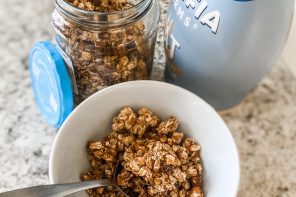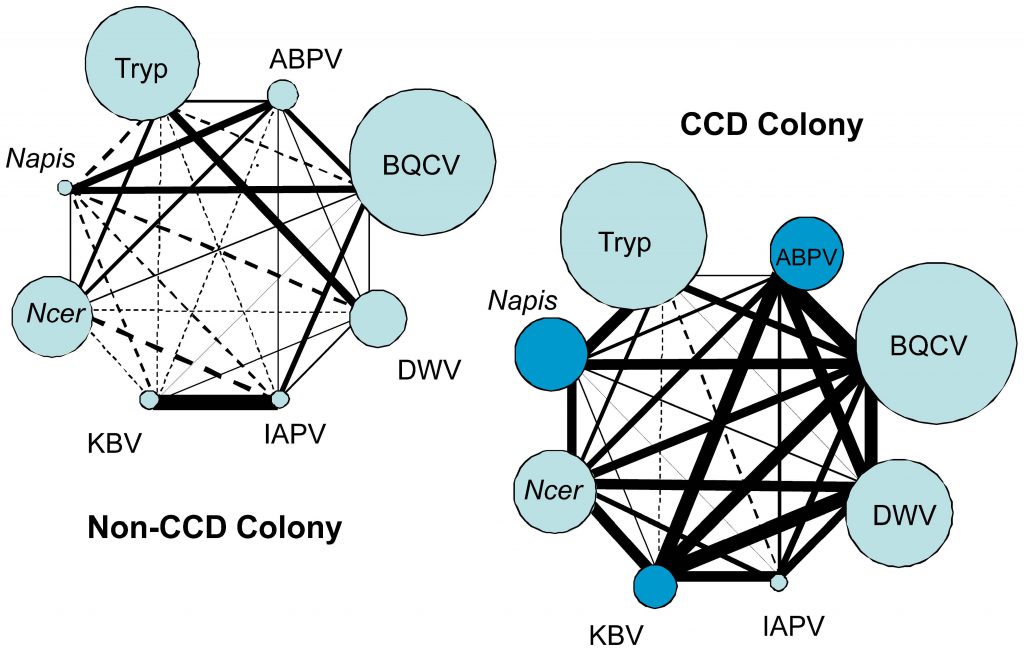By: Becky Masterman & Bridget Mendel
Beekeeping is exactly like crypto-currency: it’s one of those topics that you have to think twice about bringing up in conversation, depending on how many questions you’re in the mood to answer. Sometimes you wish you’d printed out a fact sheet to answer all the trivia (What do you mean a divide? What’s blockchain? Is it true that queens fight each other? What is a cryptokitty dragon and why does my son want one? Should I get some?).
But within the beekeeping community, when the language is shared, the topic is always beekeeping, and it never gets old. We can oscillate between discussing the mundane (how do you get the bees out of your supers before pulling them?) and the sublime (was Zeus’ mom a honey bee or what?) Then there are those science-y questions, which are the ones we truly love best. For example: haplodiploidy. Don your nerd glasses, dear reader!
Sex determination is important in honey bees, and not just for making jokes about how drones sit around eating all day while the females work. Honey bees are “haplodiploid,” a chromosome condition in common with all members of the insect Order Hymenoptera (think ants and wasps as well as bees). A simple way to explain honey bee haplodiploidy is that workers and queens are female, have two sets of chromosomes (diploid) and develop from a fertilized egg. Drones, or males, have only one set of chromosomes (haploid) and develop from an unfertilized egg. This chromosomal setup makes our already impressive honey beasts even more fascinating. Haplodiploidy is a part of the behind-the-scenes science of two common (and commonly confused) beekeeping management issues: drone layers and laying workers.
In the honey bee haplodiploid system, sex is usually determined by whether the egg is diploid (female destined) or haploid (male destined). Also important in sex determination is the alleles, or different forms of the same gene, and the locus (position) along the chromosome. Diploid females are heterozygous (have two different alleles) at the sex determining locus (see Figure 1). Normal haploid males have only one set of chromosomes, so can’t be heterozygous at the sex allele. However in some freak cases, a diploid egg can develop into a male called a diploid drone. This can happen if there is homozygosity (similar alleles) at the sex-determining locus on one set of chromosomes. Diploid drones are a sign of inbreeding, which is extremely rare in honey bees because the queen mates with multiple drones. Plus, you will not see diploid drones develop in the colony because workers cannibalize diploid drone larvae as soon as they hatch from the egg.

Figure 1: Examples of heterozygous gene
inheritance. Honey bee workers and queens
are diploid (two sets of chromosomes) and
heterozygous (have two different alleles) at
the sex determining locus.
Photo credit: https://commons.wikimedia.org/wiki/File:Heterozygous.jpg
Drone Layers
Drone production in a honey bee colony is seasonal. When floral resources are plentiful, drones are produced. When food gathering and temperatures decrease, drone production ceases. The colony controls the rearing of drones; choosing to feed drone larvae or not depending on the resources available. But sometimes, a queen runs out of sperm and that’s when the boys get out of control. Without viable sperm, the queen can only lay unfertilized eggs and therefore can produce only new males. It is relatively easy to spot a drone layer queen, as we can rely on the appearance of puffy, capped drone brood in worker cells within central brood nest areas where there should be worker brood. Queens can become drone layers for many reasons that include mating issues due to weather, running out of their stored sperm, extreme productivity, or relative old age. It is also possible for some of the sperm stored in the queen’s spermatheca to die due to temperature stress or pesticides and therefore not be able to fertilize eggs as effectively (Amiri et al. 2017). The drone layer queen issue is easy to fix if you can remove the dowager in question and introduce a new queen. With limited availability of mated queens, both early Spring and late Fall are difficult times to requeen colonies headed by drone layers.
Laying Workers
Although workers do not mate, they can lay eggs in particular situations, albeit only unfertilized, haploid (aka male) ones. In a functioning colony, worker ovaries are suppressed by queen and brood pheromone (Ronai et al. 2016, Winston, 1987). If the queen dies, is removed, or is pheromonally not vital, and there is little or no open brood (larvae), worker egg production is not suppressed, and some bees in a colony will progress to become laying workers, which is difficult to reverse (Winston, 1987).

Figure 2: Worker eggs are not fertilized, so they
are haploid (one set of chromosomes) and become drones. Workers also lack the elongated abdomen
that enables efficient and accurate egg laying in
cells. Instead of laying one egg per cell in a uniform pattern, workers will often deposit multiple eggs haphazardly into the cells.
Photo credit: Katie Lee, PhD

Figure 3: Here you can see multiple eggs in single cells, eggs laid on top of larvae, and two drones developing in a single cell: signs of a laying worker.
Photo credit: Katie Lee, PhD
Workers only have three to 26 ovarioles per ovary compared to the range of 100-180 in a queen ovary (Snodgrass 2018, Jackson et al. 2011). So one could be forgiven for assuming they therefore leave the egg laying to Mom. But why? Was it due to a cryptic fortune cookie prophecy like in Freaky Friday? Most likely not. This is actually the superorganism’s or worker’s last ditch effort to get their genetics out there.
Laying workers aren’t very good at egg laying (about as good as the first time you tried grafting) and the end result is far from the machine-like precision patterns of a queen (see Figures 2 and 3). When laying workers take over, you will see eggs on the side of the cells and often multiple eggs in each cell. We like an Australian study that quantified the impact those worker-produced drones might have in mating. Based on the smaller size of worker-produced drones, they measured their percentage in a drone congregation area at 0.23% (Utaipanon et al. 2019). While smaller than another study that estimated a 9% contribution of drones with worker moms (Berg 1991), the authors acknowledge that even at the less-than 1% contribution, it is a reproductive strategy that can move the colony’s genes into the next generation.
You can’t just requeen a colony that has laying workers. They will kill the new queen. Fixing a laying worker colony is more of a mad science experiment than a sound management decision. It requires you to move frames of open brood from a healthy colony to the laying worker colony over time until the brood pheromone odor begins suppressing the ovaries of the laying workers. You can introduce a queen cell along with the open brood and hope she emerges and mates. Meanwhile, you have been weakening the brood donor with the resource movement and wasting quite a bit of time. It is fun to do, but never officially recommended (like most fun things).
We hope you have a new or renewed appreciation of your bees’ chromosomes, egg production and your diploid bees. At the very least, if you find a drone layer or laying workers this Summer, remember that your bee problems are less complicated than your crypto-currency opportunities.
References
Amiri, E, Strand, M., Rueppell, O, & Tarpy, D (2017). Queen Quality and the Impact of Honey Bee Diseases on Queen Health: Potential for Interactions between Two Major Threats to Colony Health. Insects, 8(2), 48. MDPI AG. Retrieved from http://dx.doi.org/10.3390/insects80200
Berg S (1991) Investigation on the rates of large and small drones at a drone congregation area. Apidologie 22:437–438
Jackson, JT, Tarpy, DR, Fahrbach, SE (2011) Histological estimates of ovariole number in honey bee queens, Apis mellifera, reveal lack of correlation with other queen quality measures Journal of Insect Science, Volume 11, Issue 1, 82.
Ronai, I, Oldroyd, BP and Vergoz, V (2016), Queen pheromone regulates programmed cell death in the honey bee worker ovary. Insect Mol Biol, 25: 646-652.
Utaipanon, P, Holmes, MJ and Oldroyd, BP (2019) Queenless colonies contribute to the male breeding population at honey bee drone congregation areas. Insectes Sociaux volume 66, 593–599.
Winston, ML (1987). The Biology of the Honey Bee.
Acknowledgement
The authors would like to thank Dr. Marla Spivak for helpful edits and suggestions in our navigation of haplodiploidy.









